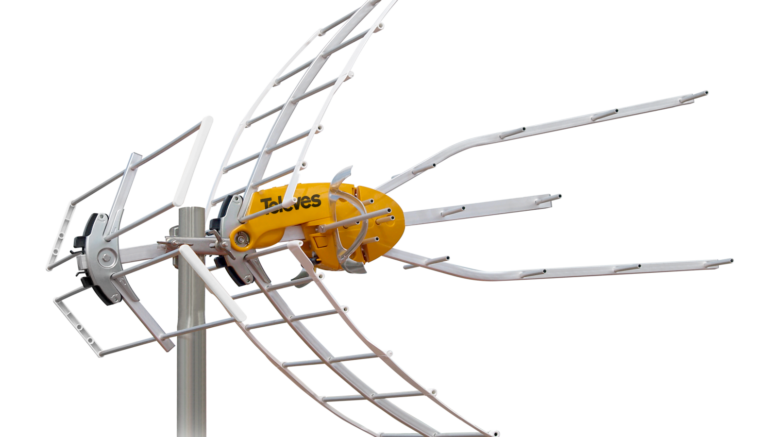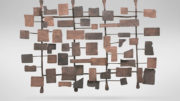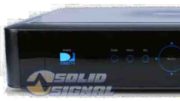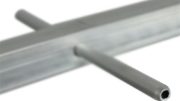It’s been a long time since we did an instrumented antenna test here at The Solid Signal Blog. It looks like the last time was way back in 2019, a time which may as well have been a hundred years ago. 2020 and 2021 were tough times for antenna makers, as global aluminum shortages and supply chain issues made it hard to roll out new products. But, these products are back with a vengeance, and I’m pleased to roll out this all new review of Televes’ latest.
About the Ellipse Mix
Televes’ Ellipse Mix isn’t a new antenna. The basic antenna, the Ellipse, was first shown to US audiences in 2019. We saw it at CES. But, we felt at the time that a UHF/VHF version was needed and our friends at Televes agreed. They developed the “Mix” version which rolled out very slowly over the next 18 months. It took us a while to be able to bring it in house, but we finally have.
Top performance, smaller size, easier assembly
Compared to the previous-generation DATBOSS antennas, the Ellipse is smaller. The size reduction comes mostly from redesigned director booms which do a better job at focusing signal. The result is an antenna that ships in a smaller package, making it less expensive to ship, takes less aluminum to make, and ends up being a little easier to mount. Televes promises that performance isn’t affected and that the current generation performs as well as the DATBOSS Mix.
The big plus here is the ease of assembly. I’ve built a lot of antennas and the Televes ones were always some of the most time-consuming. With the Ellipse line, Televes promises tool-free installation. They claim that you can do it in under a minute. I don’t know about that, but it’s certainly possible to do it in under ten. Here’s a video where I started with a sealed box, barely looked at the manual, made mistakes, and still had it built in 10 minutes.
You might not think that assembly time matters much for an antenna, since you’re only going to assemble it once. But I can tell you that the difficult assembly process has caused many of our customers to shy away from Televes. Now there’s no excuse.
But does it hold up?
I tested the Televes DATBOSS Mix back in 2017 using different equipment than I have now. This was also prior to the FCC “repack” which changed broadcast frequencies for my local area. So, it’s hard to get an apples-to-apples comparison. Still, let’s try.
Testing parameters
As always, antenna testing takes place at our Southern California laboratory which is roughly 60 miles from the broadcast towers. In the absence of a laboratory environment, we use real-world readings. Gain numbers are taken as a measure of improvements over a piece of bare copper wire bent into a dipole.
In 2017 I did not measure signal-to-noise ratio, which is the most important part of the process for digital signals. Today, I use a Televes spectrum analyzer to read these numbers and report them.
DATBOSS Mix and DAT970 numbers
This is my test chart from 2017.
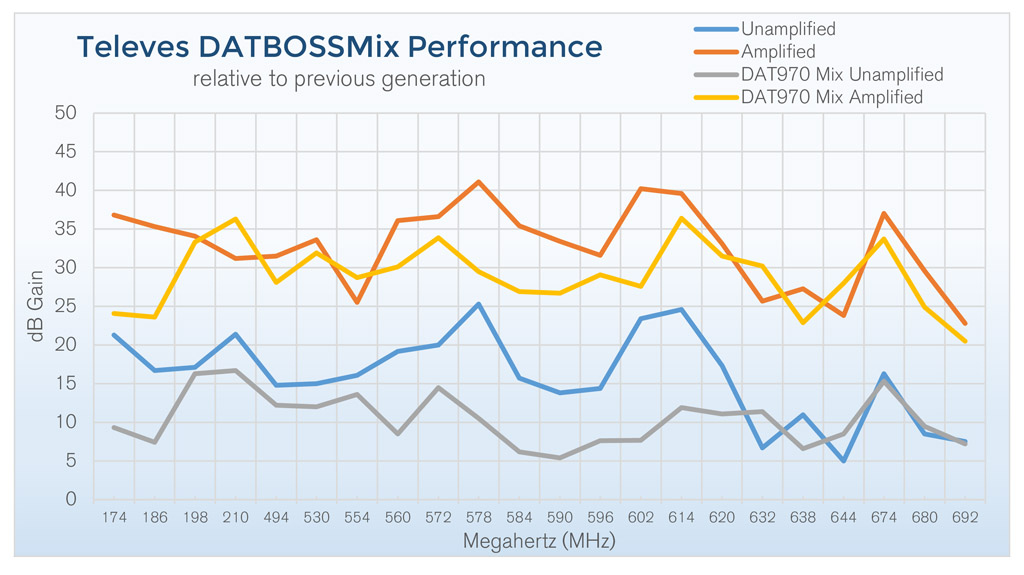
Let’s compare this to what I got for the Ellipse Mix recently.
Ellipse Mix numbers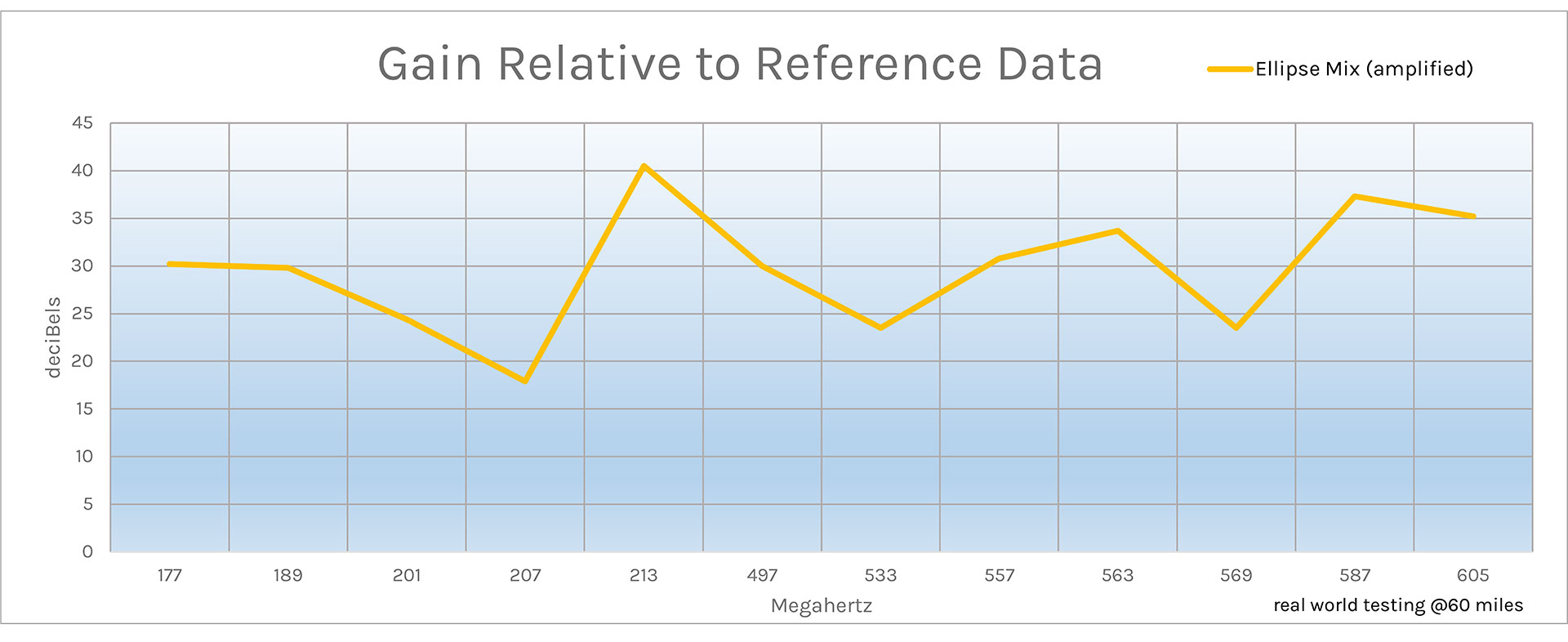
As you can see, gain numbers range from about 25-40 for the amplified Ellipse Mix, the same as what I saw in 2017. The different peaks are largely due to the fact that different frequencies are in use today. Using today’s data, it’s possible to get even more information.
Televes provides some of the highest amplification numbers available. You can see this in the older charts as well. Televes antennas use clean onboard amps that provide good performance across all channels. To some degree this chart is affected by the distance of the channels being tested, since it is not generated from laboratory data.

Here’s the real meat-and-potatoes chart. This chart will show you how this antenna performed in real-world testing, and show you the channels you will expect to get. Any bars that reach up well into the “green” range mean you can expect to get that channel even with a splitter. Those in the lower green or yellow range mean you’ll get good performance on one TV.
As you can see here, there’s a lot to like. Even at 60 miles, this antenna pulls in a lot of stuff. What’s really impressive is that the unamplified numbers are often as good as the amplified ones. This says two things: first that the antenna is sensitive enough to pull in these signals very well, and second that the amplifier doesn’t introduce much noise as it’s amplifying.
Preamplifiers for digital signals act to put more signal on the line so that the cable runs can be longer. In our test environment, the total cable run is under 25 feet, and this means that we’re not seeing the need for preamplification. But clearly it’s not hurting us either.
Here’s a quick video that goes over the same stuff:
Get the Ellipse Mix now
The Televes Ellipse Mix is now available by shopping at Solid Signal! If you have any questions about this antenna or any other antenna, call the experts! We’re here to help you during East Coast business hours at 888-233-7563.

